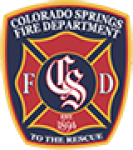Frozen Fire Protection Systems Concerns:
- Fire losses due to crippled systems
- Extensive water damage to the burst piping
Common Causes of Pipe Freezing
- Insufficient heat provided in/throughout a building
- Cold air entering broken windows/cracks in walls
- Insufficient insulation material in ceilings/walls
- Inadequate antifreeze in the system
A physical inspection of all buildings and areas protected by fire sprinklers must be conducted before the cold weather season arrives. The inspection must insure that there are no areas with insufficient heat and that physical features and precautions are in place to insure that sprinkler systems are not exposed to freezing temperatures.
Preventive Measures Prior to and During Cold Weather Season
- Have employees keep alert for and report potential or existing cold weather problems
- Check fire protection systems more frequently than normal during cold weather
- Do not attempt do-it-yourself repairs on fire safety equipment. Obtain the services of trained service personnel.
- Do not use torches or other open flame devices to thaw pipes or other equipment
- Do not use temporary heating equipment such as salamanders and other un-vented portable fuel-burning heaters as these heaters introduce fire and health hazards. Portable electric heaters also present unnecessary fire and health hazards.
- During the annual servicing of the sprinkler system by your licensed contractor, have them demonstrate the operation of all valves. Have appropriate personnel rehearse closing the valves so they can shut down the system in the event of a burst pipe.
Wet Pipe Sprinkler Systems
- Freezing of wet pipe sprinkler systems occurs due to a lack of adequate heat.
- Keep doors, windows and vents closed when not in use or resulting drafts will allow freezing air to contact sprinkler piping. Repair broken windows, doors and other items in need of fixing. Remember the possibility that high winds may accompany periods of low temperatures.
- Where sprinkler piping may be exposed to outside temperatures, the pipe should be heated or adequately insulated.
- Provide heating of adequate capacity to maintain the temperature of no less than 40°F near sprinkler piping. Particular attention should be given to piping in attics, entries, penthouses, stairways, under floor areas, above ceilings, shipping, and similar out-of-the-way areas where low temperatures might occur.
- Adequate heat should be provided to all affected areas by extension of the existing heating system rather than other means such as space heaters or other localized heating appliances.
- If the sprinkler system is to be exposed to freezing temperatures, such as when a buildings heating system is planned to be shut off or interrupted for a period of time, precautionary measures must be taken. The system’s water may have to be drained and a fire watch established or temporary heating provided.
- For loading docks or other sections of the system that may have an antifreeze loop system, the specific gravity of the antifreeze solution must be checked prior to the cold weather season to ensure that it has the proper proportions of antifreeze and water. Make sure the valve is open.
Dry Pipe Sprinkler Systems
- Dry pipe systems, because they do not contain water in their piping, are less likely to freeze than wet pipe systems. However, certain precautions should be taken to ensure that freezing does not occur in such systems when cold weather arrives.
- Drain all water/condensate from auxiliary drains and all low points. Check drains under stairs or platforms. Use a checklist when possible.
- Ensure the dry pipe valve and riser is adequately protected against freezing. Heat the valve enclosure or use electrical heater strips under thermostatic controls so that a minimum of 50°F can be maintained.
- Verify sufficient air is in the system to allow for pressure drops that occurs during low temperatures. Pressures should be checked daily during cold weather (preferably at night when temperatures are lowest) or provide pressure supervision and low-pressure alarms. Inadequate pressures result in system tripping and freezing of the water that enters the system piping.
- Air is usually supplied to a dry pipe system by a compressor. The air intakes into the compressor should be located in a cool, dry atmosphere. Avoid warm, damp areas, since moisture introduced with the air condenses in the piping and collects at low points where it may freeze. Air dryers should be installed on air intakes.
- Repair, replace or refasten broken, missing or loose sprinkler pipe hangers to ensure proper pitch of piping to provide good drainage.
- Temperature-signaling devices monitored by a central station alarm service can be installed in the valve room or enclosure.

